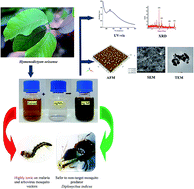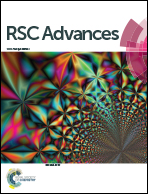One-pot green synthesis of silver nanocrystals using Hymenodictyon orixense: a cheap and effective tool against malaria, chikungunya and Japanese encephalitis mosquito vectors?
Abstract
Mosquitoes are important vectors of malaria, dengue, Zika virus and many other parasites and pathogens of public health relevance. Recently, the green nanosynthesis of mosquitocides relying on plant compounds as reducing and stabilizing agents has received growing interest, due to the absence of toxic chemicals and high-energy input. In this research, Hymenodictyon orixense-mediated synthesis of silver nanoparticles (AgNPs) was conducted to control larval populations of the malaria vector Anopheles subpictus, the chikungunya vector Aedes albopictus and the Japanese encephalitis vector Culex tritaeniorhynchus. AgNPs were characterized using UV-visible spectrophotometry, FTIR spectroscopy, EDX and XRD analyses, AFM, SEM and TEM. AgNPs were toxic towards all the mosquito vectors, LC50 values ranged from 17.10 μg ml−1 to 20.08 μg ml−1. Notably, AgNPs were safer to the non-target mosquito predator Diplonychus indicus (LC50 = 833 μg ml−1). Overall, H. orixense-fabricated AgNPs can be considered for the development of novel and safer control tools against mosquito vectors of medical and veterinary importance.


 Please wait while we load your content...
Please wait while we load your content...